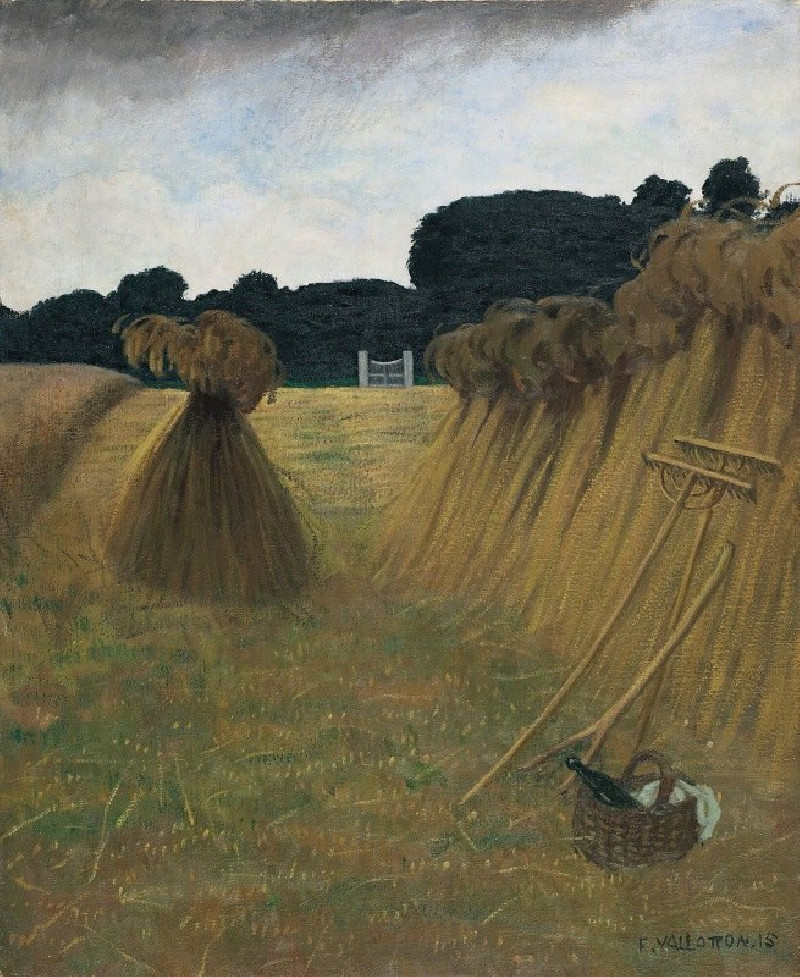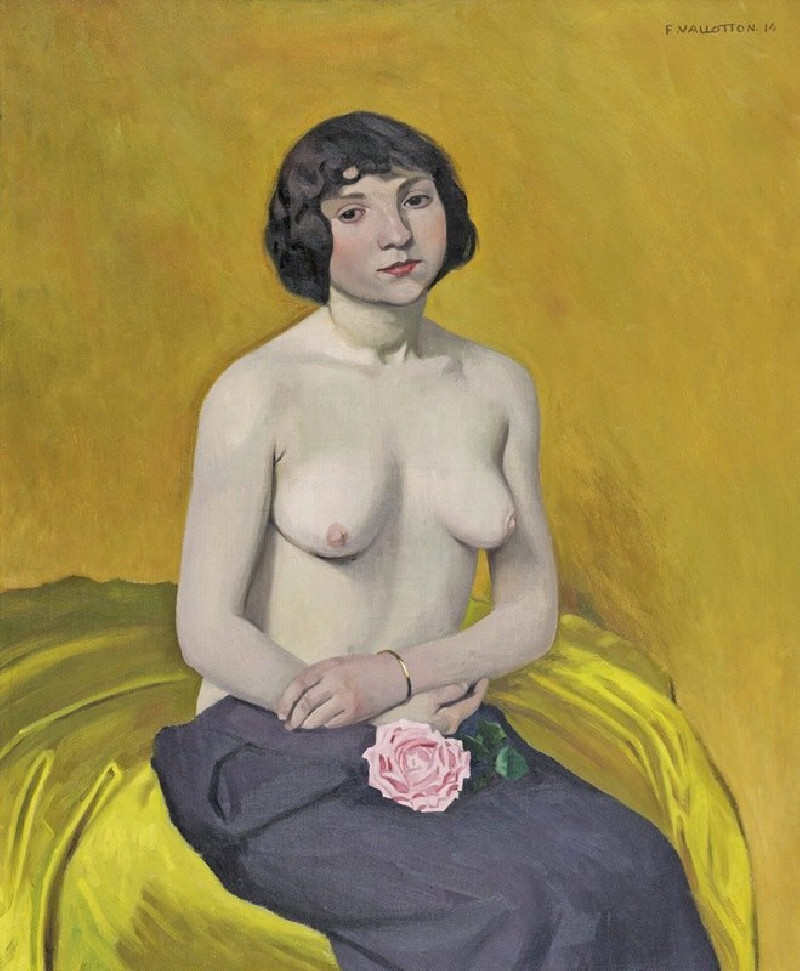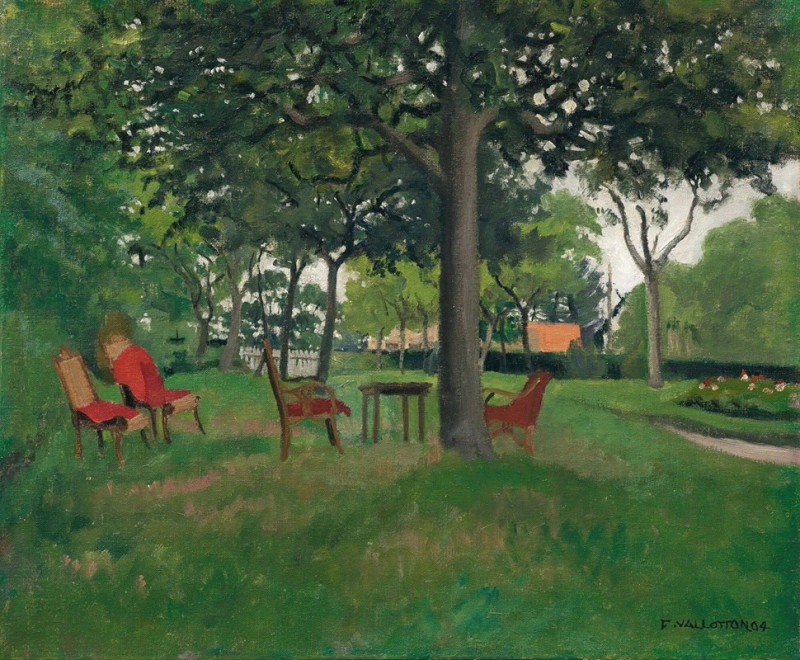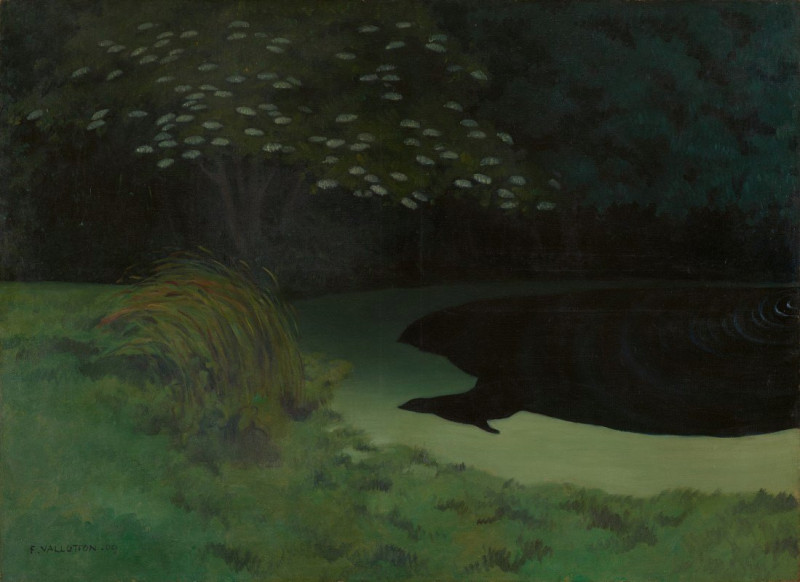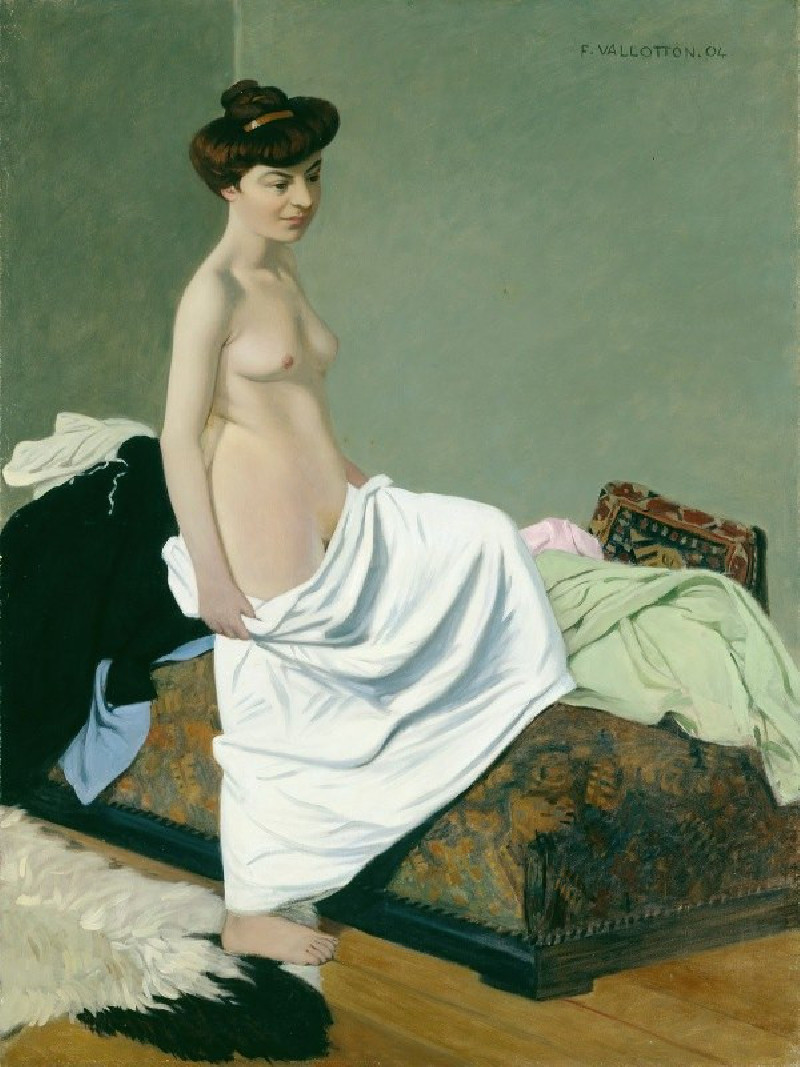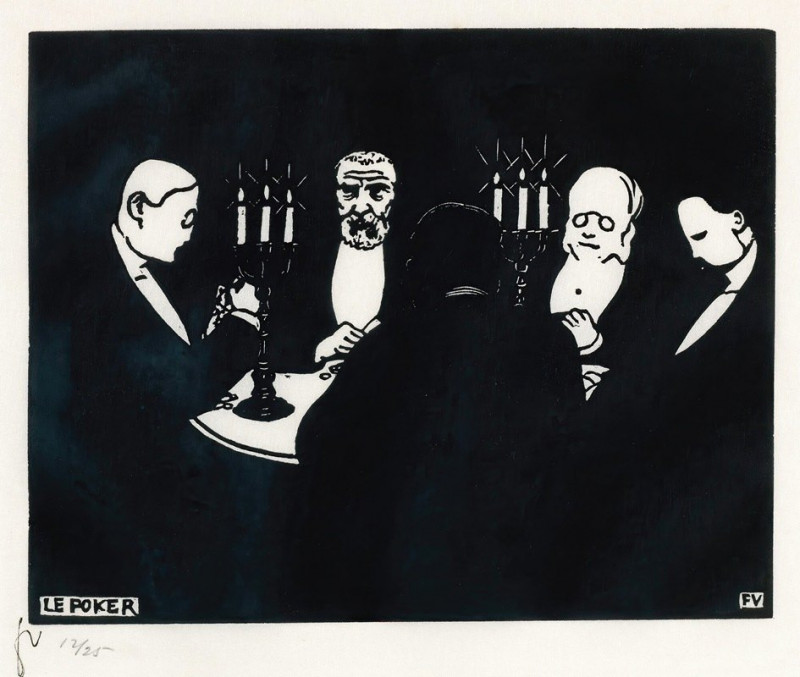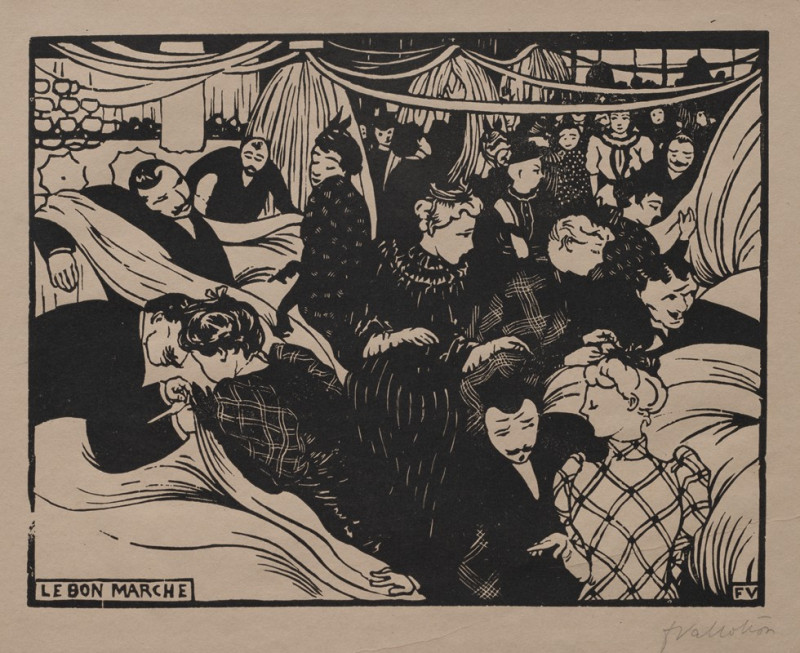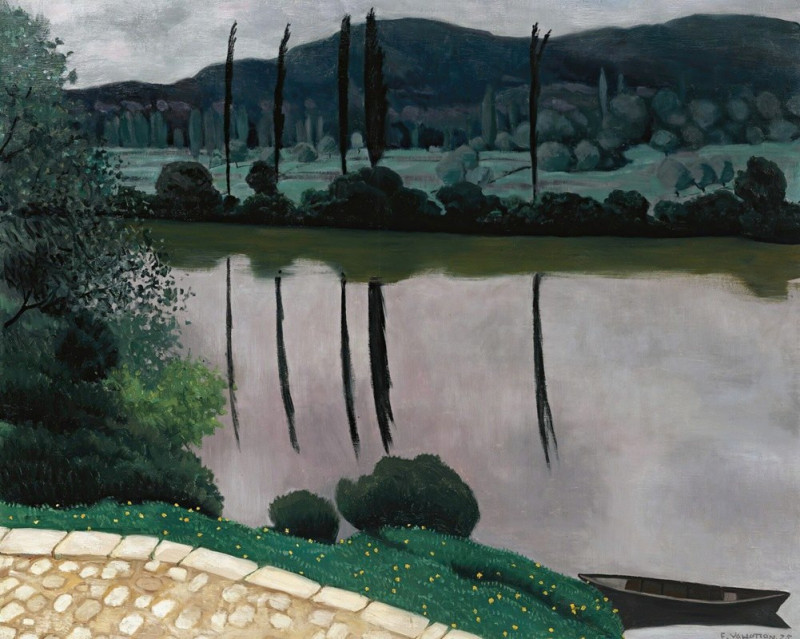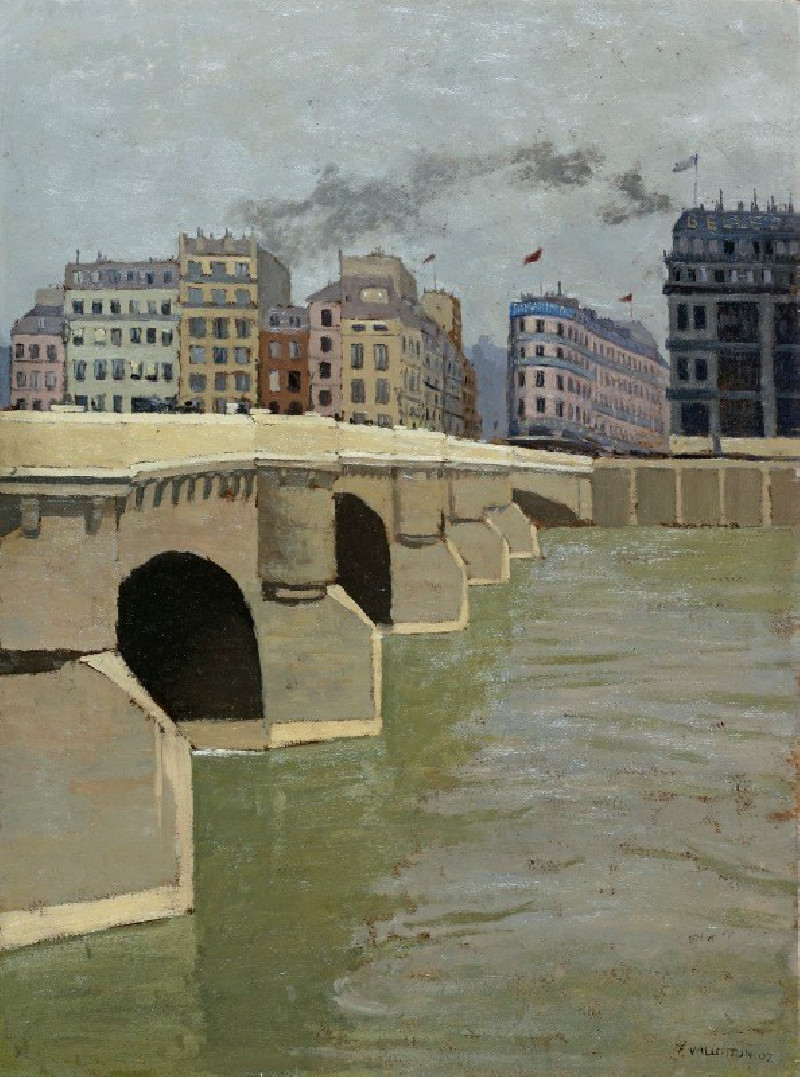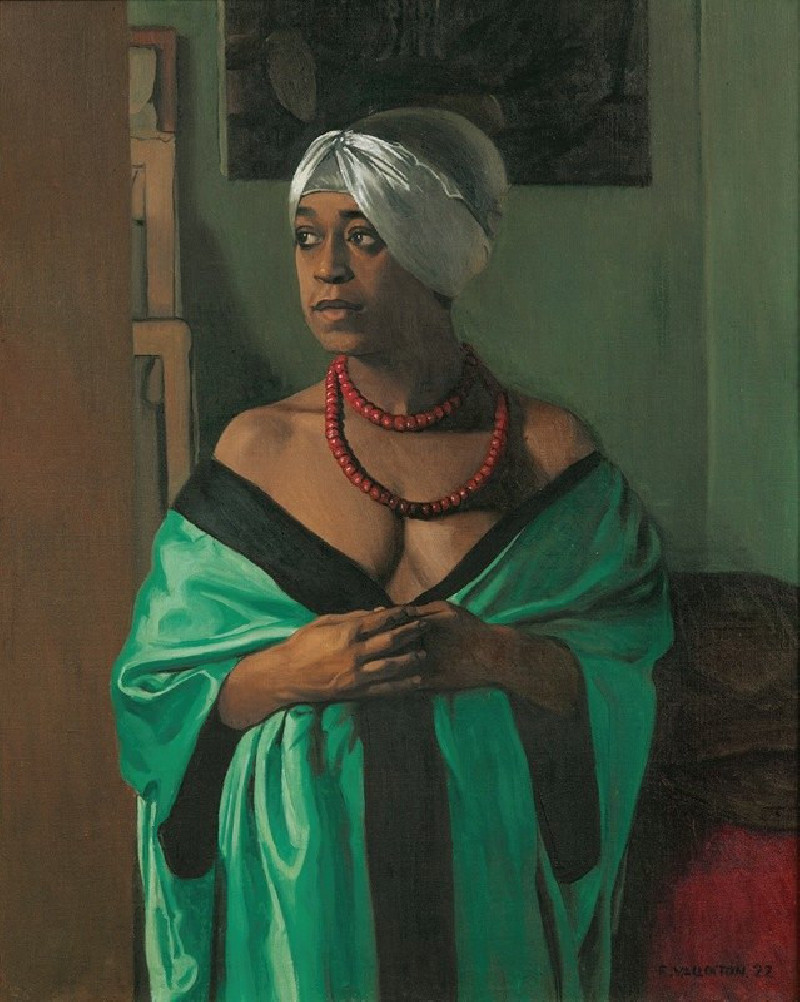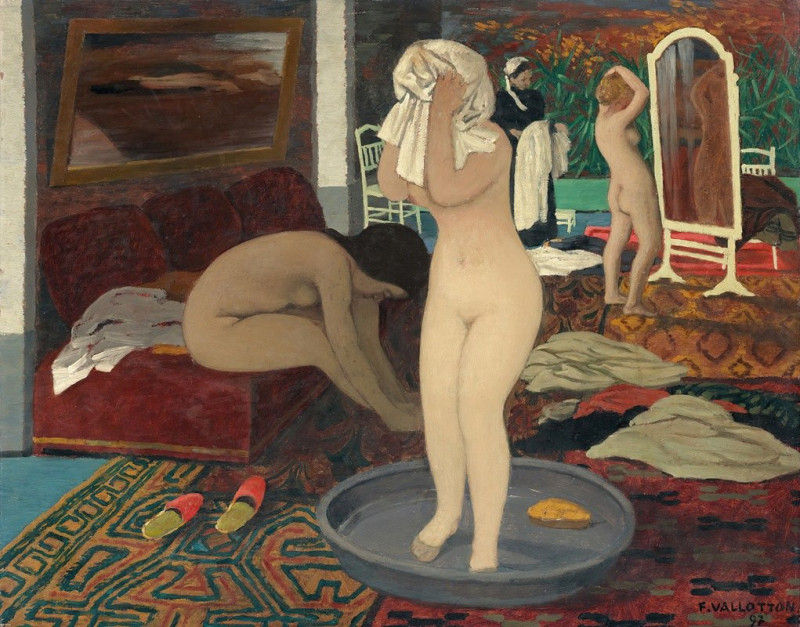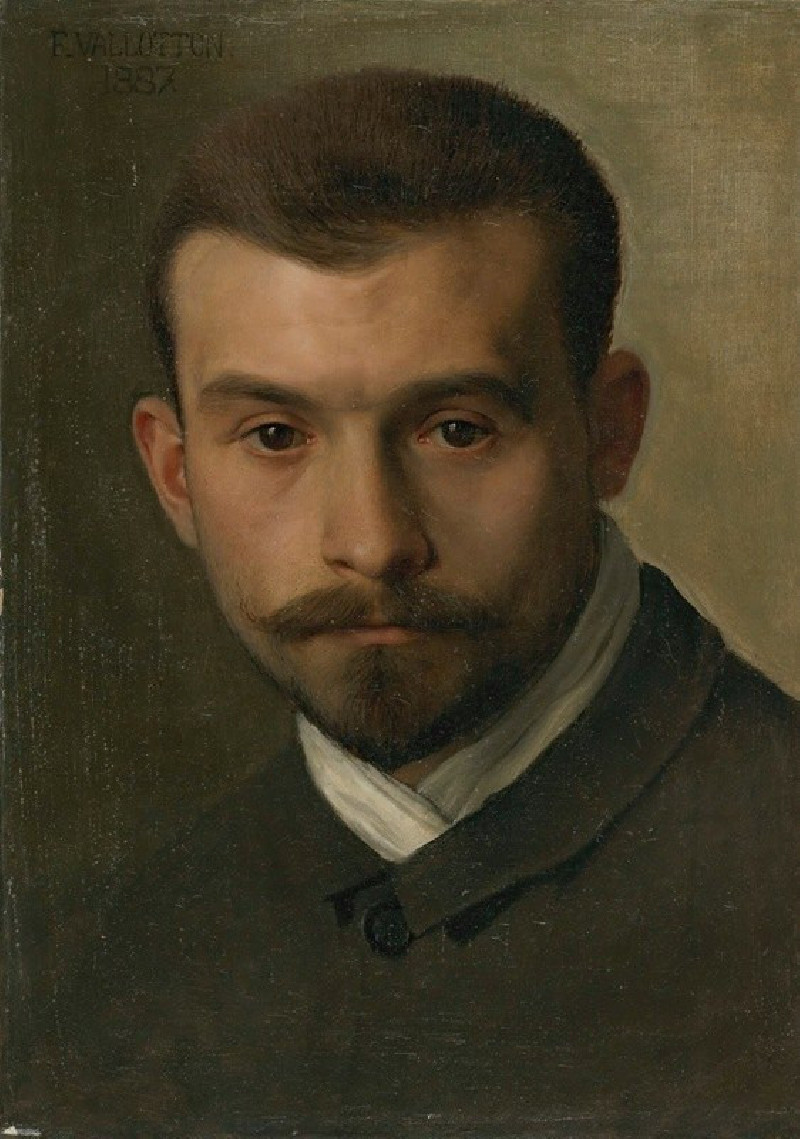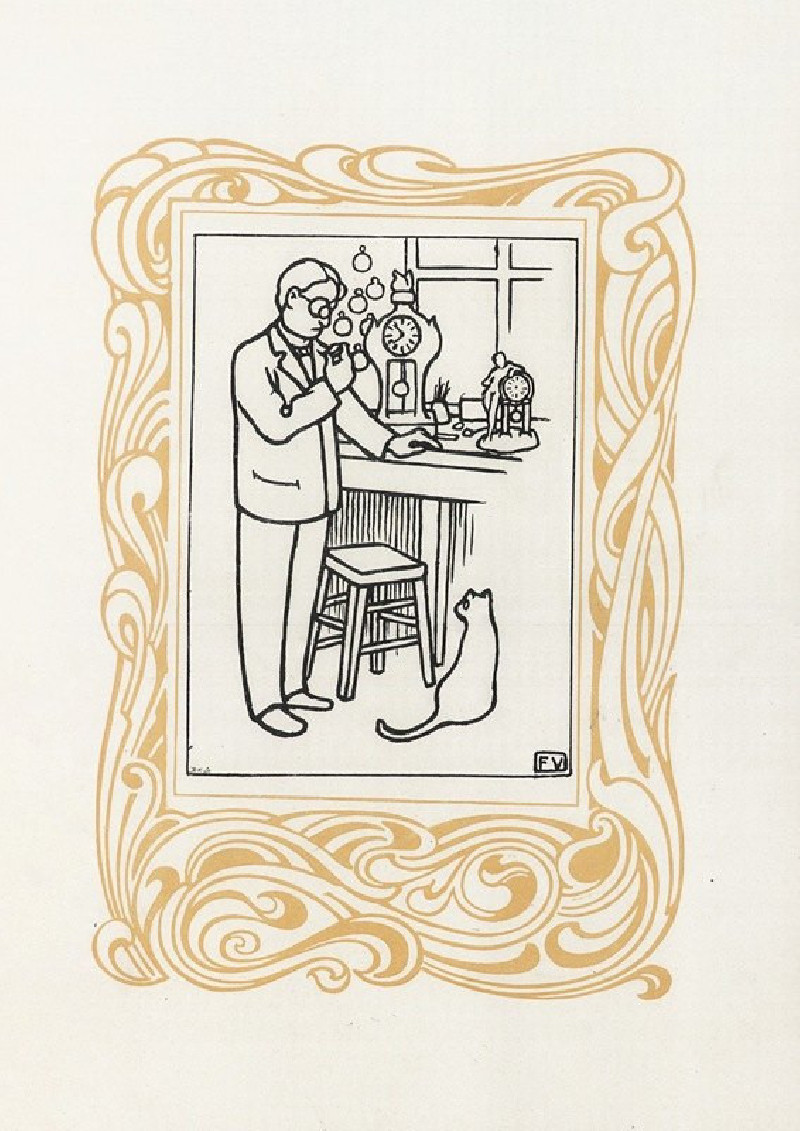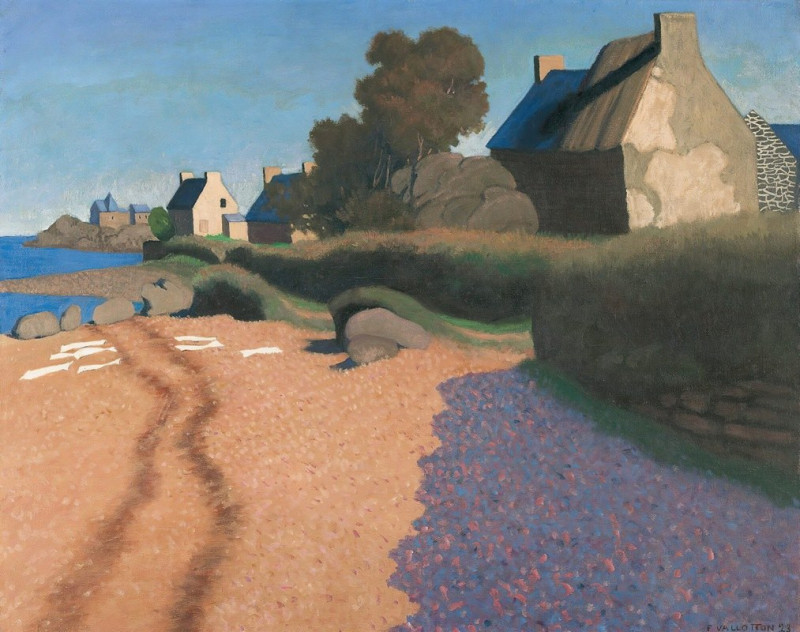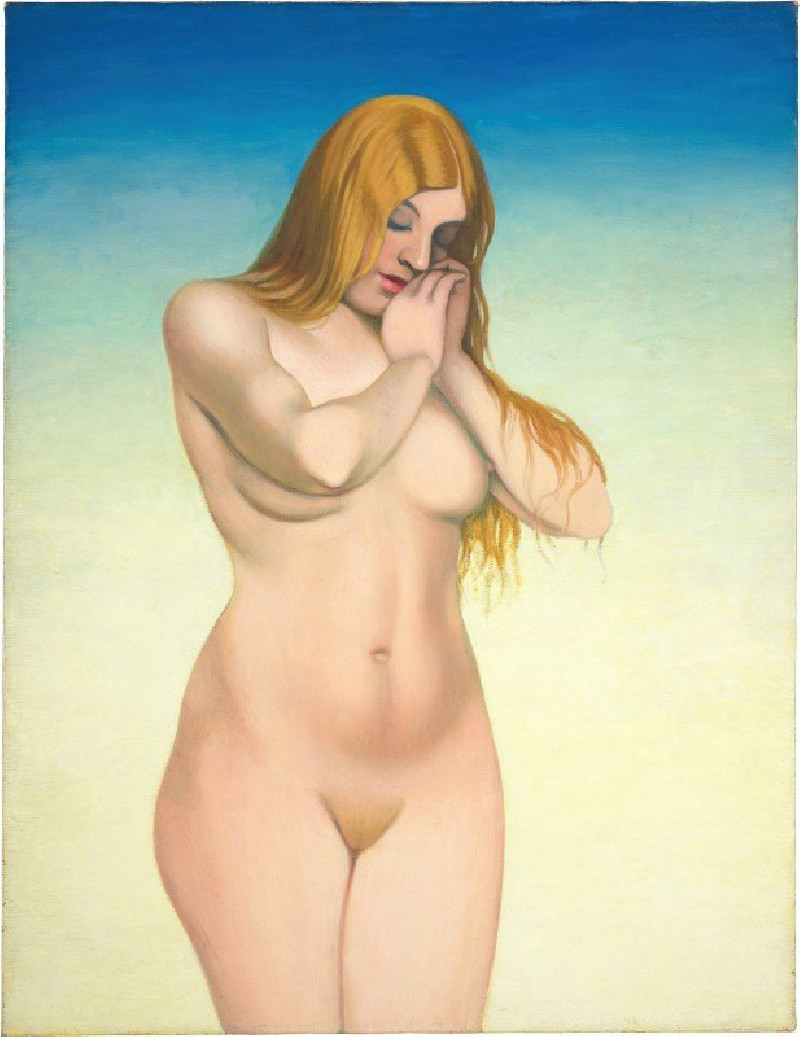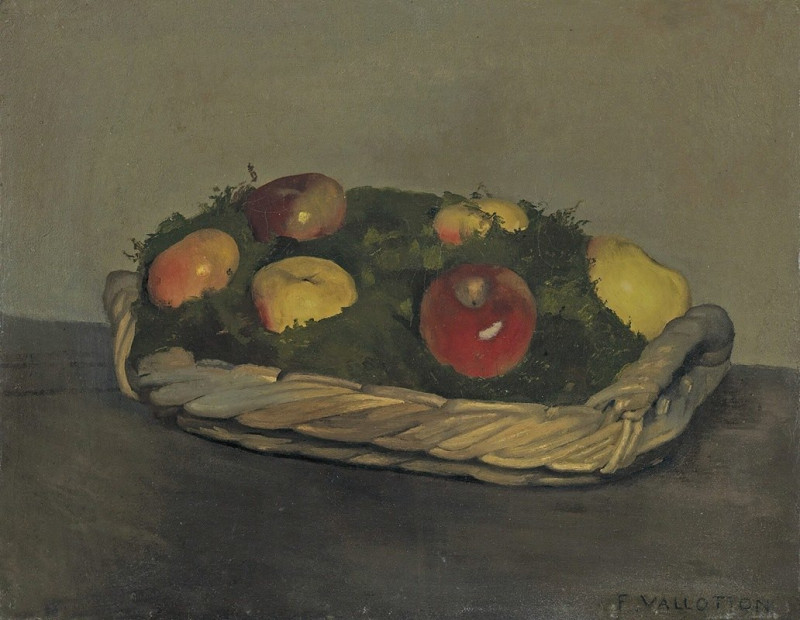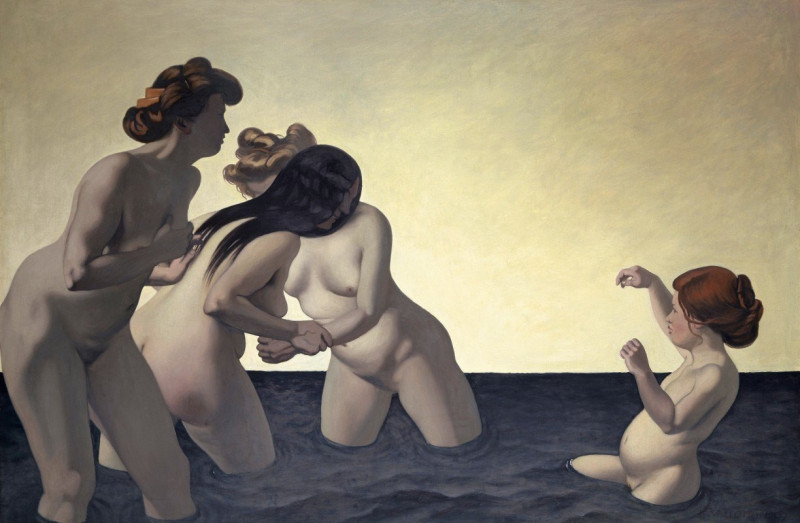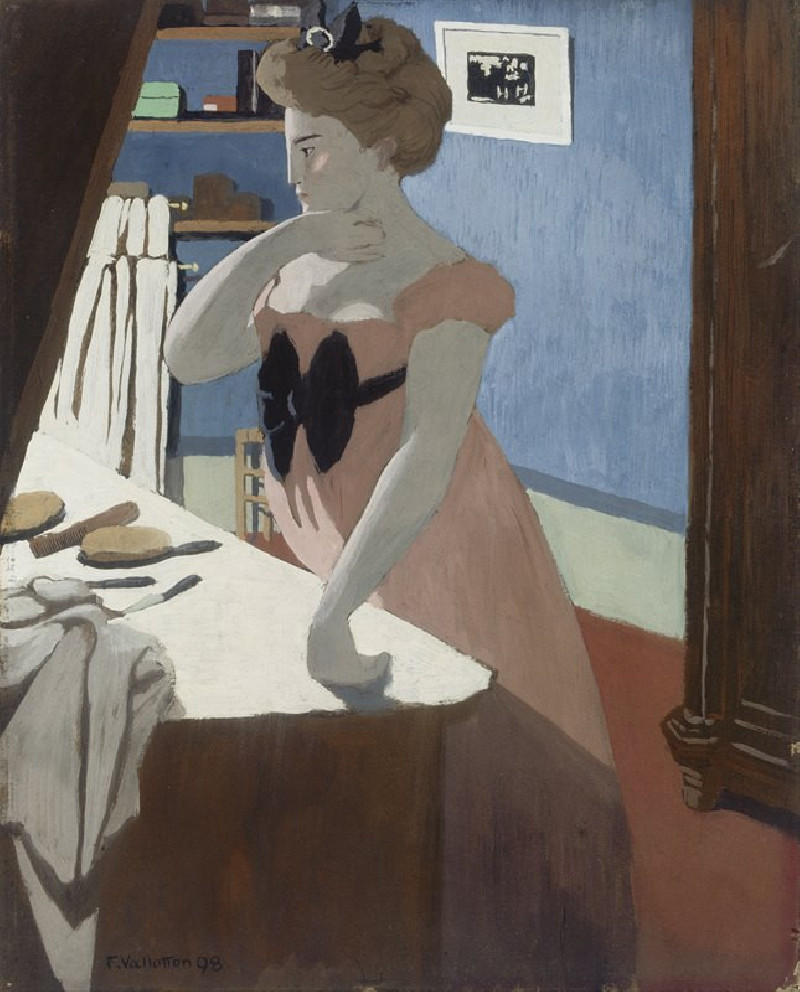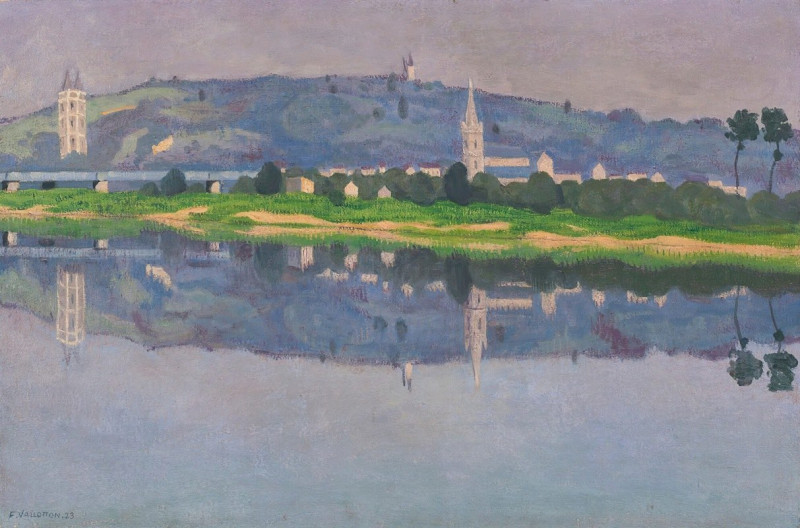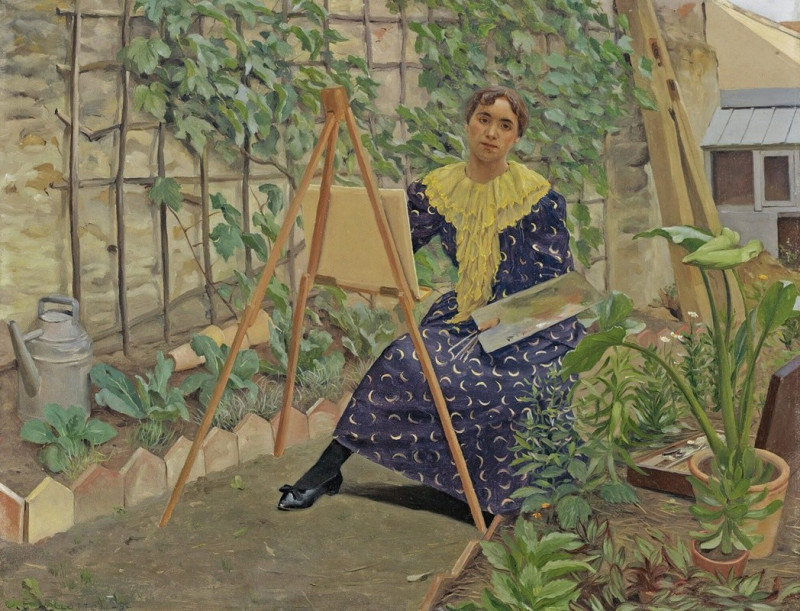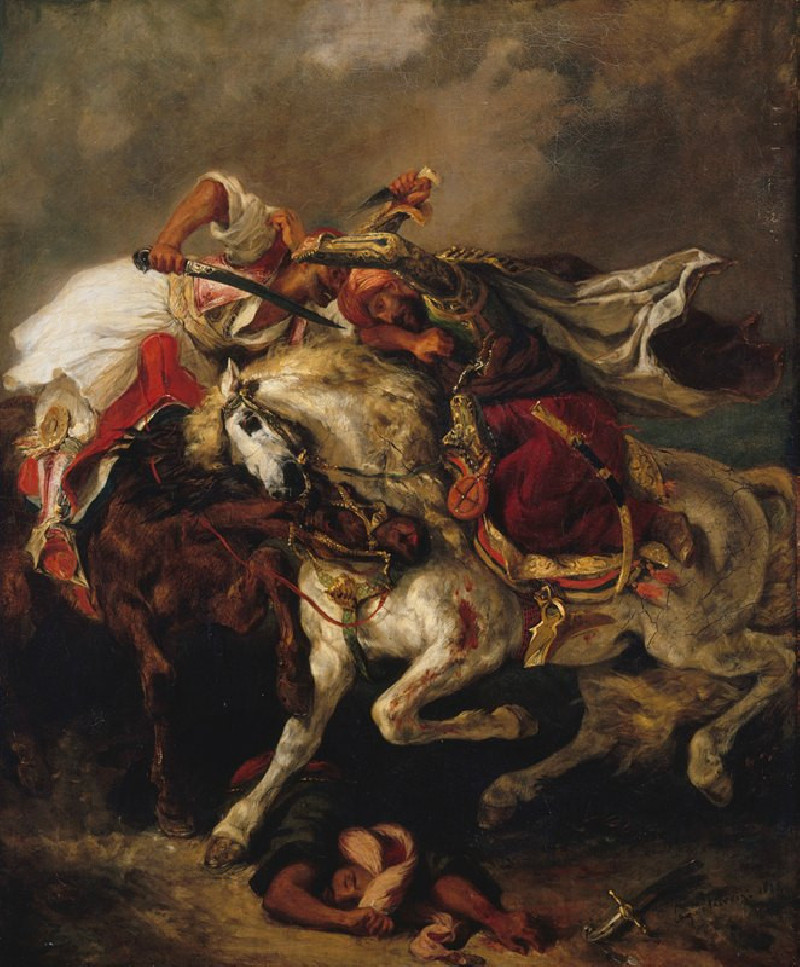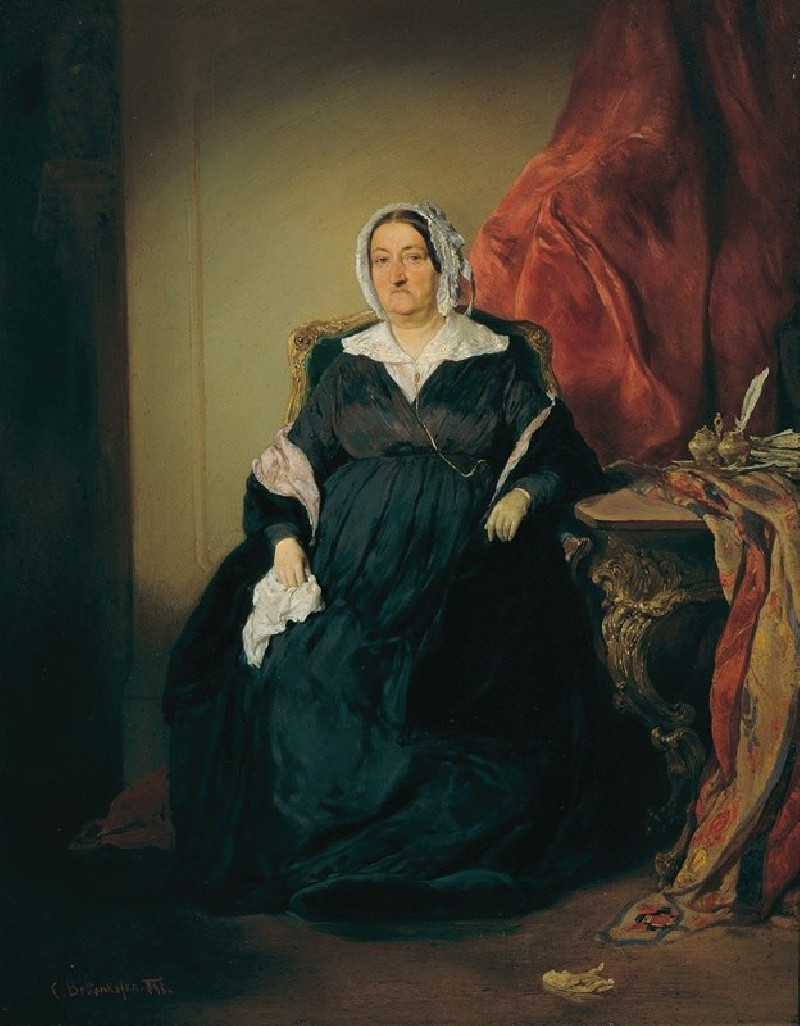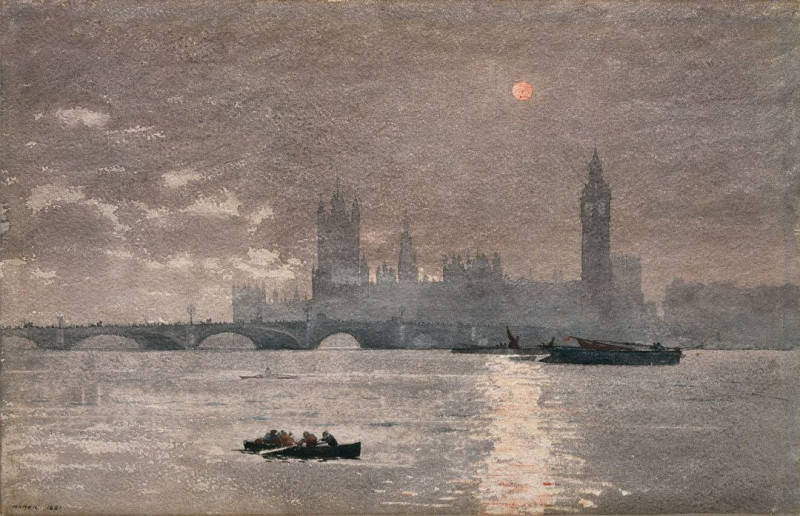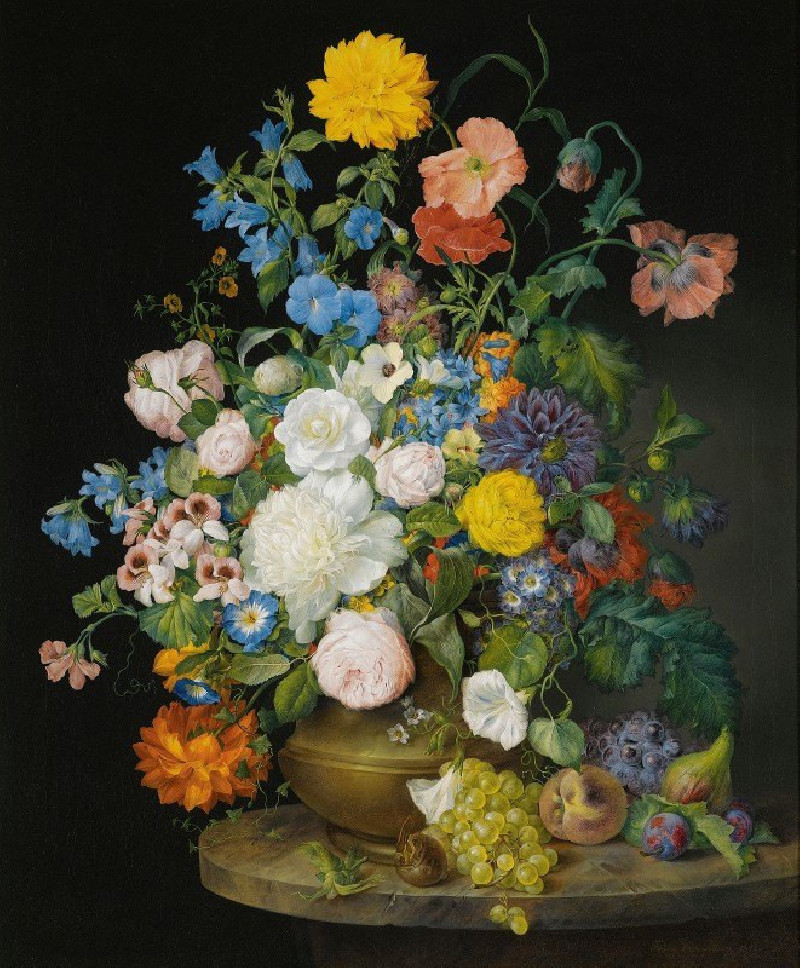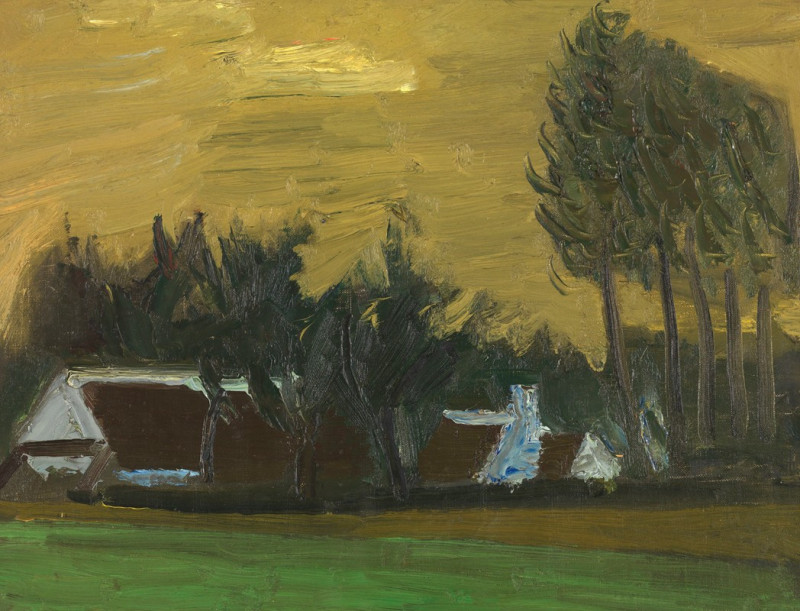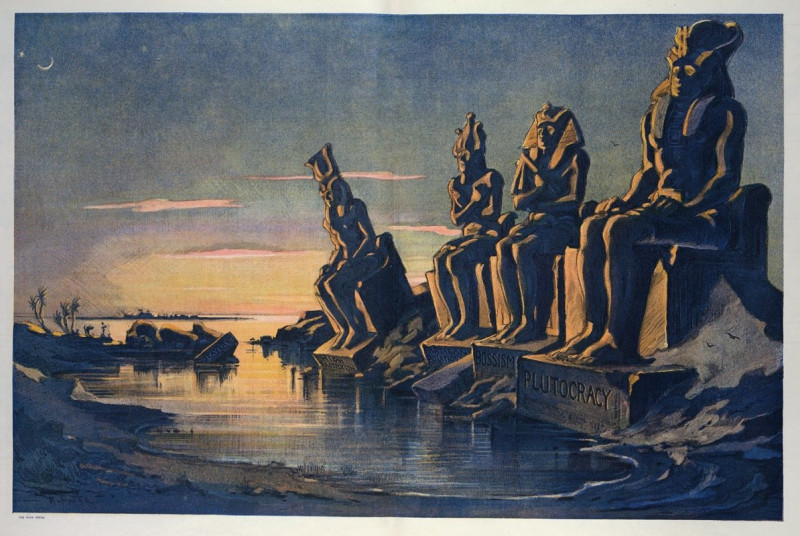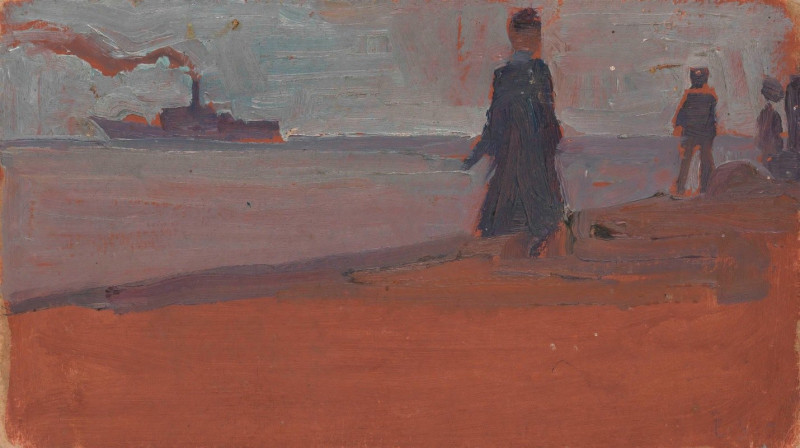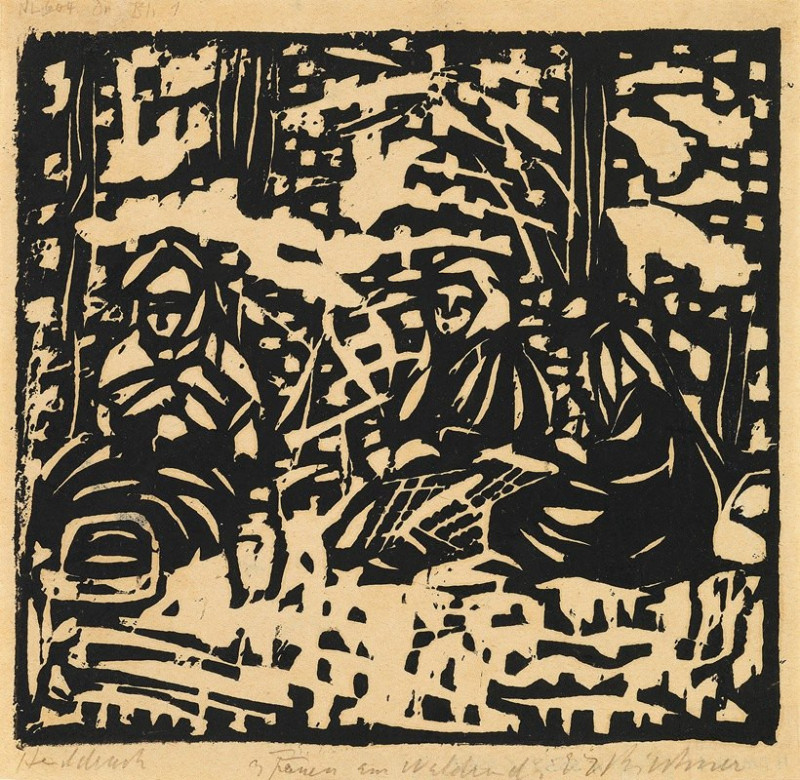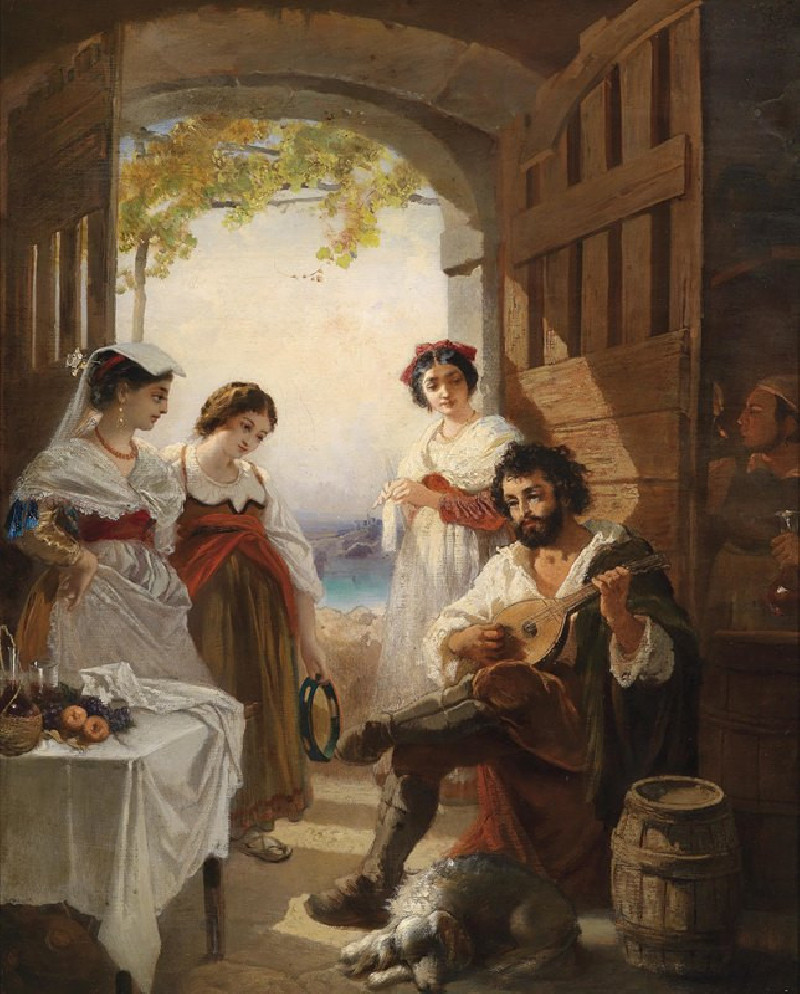The Sheaves (1914)
Technique: Giclée quality print
Recommended by our customers
More about this artwork
Félix Vallotton's 1914 painting "The Sheaves" captures a serene yet poignant moment in the cycle of nature. Set against a backdrop of darkening skies and a distant line of lush trees, the artwork focuses on freshly harvested bundles of wheat gracefully dotted along the field. These sheaves stand upright, arranged in a rhythmic pattern that leads the viewer's eye towards a simple white gate at the center of the horizon, symbolizing perhaps an entrance or transition.Dominating the foreground is a meticulously painted rake and a woven basket, tools of the agricultural trade, left momentarily unattended. They serve as quiet testaments to human labor and the intimate connection between man and soil. Vallotton's use of subdued earth tones and the contrast of light and shadow evoke a sense of solemnity and timelessness. The overall composition of the painting, with its clear structural elements and absence of human figures, speaks to the theme of nature’s enduring rhythm, marked by human effort yet independent in its perpetual growth and decay.
Delivery
Returns
Félix Édouard Vallotton (December 28, 1865 – December 29, 1925) was a Swiss and French painter and printmaker associated with the group of artists known as Les Nabis. He was an important figure in the development of the modern woodcut. He painted portraits, landscapes, nudes, still lifes, and other subjects in an unemotional, realistic style.

